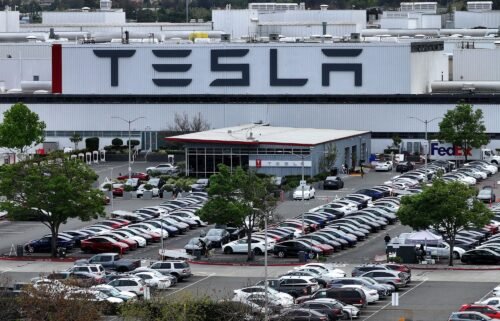Price hikes took a breather in July, fueling hopes that inflation has peaked

Runaway consumer prices took a breather in July. A woman shops for groceries on July 29 in Arlington
Martha C. White for CNN Business
Runaway inflation took a breather in July, with consumer prices increasing by 8.5% year over year, a slower pace than the 9.1% increase in June, the Bureau of Labor Statistics reported Wednesday.
On a month-to-month basis, inflation was 0%, compared to the 1.3% increase in June. Prices began rising sharply in early 2021, with the rate of inflation almost doubling over the past year.
“I think inflation probably has peaked in year-over-year terms,” said Bill Adams, chief economist at Comerica Bank.
Still, Americans have found themselves paying more — sometimes much more — for everyday items like gas and eggs, as well as larger purchases like vehicles. While consumer spending has yet to tumble, there is growing evidence that rising prices are eroding confidence and altering behavior.
The Consumer Price Index is an aggregated snapshot of a wide array of goods and services Americans buy. In July, lower gas prices effectively canceled out higher prices for food and housing. Core inflation, which does not include volatile food and fuel components, rose 5.9% year-over-year, matching the increase seen in June.
The months’ worth of increases in the CPI poses a growing challenge for the Federal Reserve, which has committed to reining in soaring prices while trying to avoid plunging the economy into a recession.
Expectations that the Fed will yet again raise its benchmark interest rate by 75 basis points at its next monetary policy making meeting have fallen since Wednesday’s inflation data came out. More analysts now expect the central bank to raise rates by 50 basis points.
“The Fed is already committed to a rate hike path,” said Ross Mayfield, investment strategy analyst at Baird. “The market is saying the Fed is closer to finished than they are to the beginning, [but] I’m not sure we’re quite there yet.”
What Americans are paying more for
Energy costs slowed for the month of July, falling 4.6%, although they remained 32.9% higher than a year before. Gasoline prices dropped by 7.7% month over month, providing some relief for drivers, but they were still 44% higher than the year before.
However, food costs continue to jump sharply, increasing by 1.1% over the month and rising 10.9% on a year-over-year basis, the largest increase since May 1979. Food at home spiked by 13.1% on a year-over-year basis. The run-up in food prices was a surprise, as lower energy prices were expected to help ease the sticker shock Americans have experienced at the supermarket over the past several months.
Price increases for new vehicles slowed a bit, rising 0.6% following last month’s rise of 0.7%. Used car and truck prices ticked down by 0.4%, and airline fares dropped by 7.8%.
The rate of increase in housing costs also moderated slightly, with the rise in overall shelter costs, rent and owners’ equivalent rent each down by a fraction of a percentage point from the previous month. However, shelter costs are still up 5.7% year over year.
The rising amount Americans have to spend to keep a roof over their heads worries economists.
“It’s stickier and it’s harder to fix than some of the other pressures,” Mayfield said.
Housing is also a big component of the CPI, given that mortgage or rent payments are often a family’s biggest monthly expense. Housing makes up roughly a third of CPI and comprises about 40% of core CPI.
Although rising mortgage rates have cooled housing sales, a lack of supply has driven prices to new highs.
“There’s such a substantial, and almost structural, mismatch between supply and demand,” Mayfield said.
Dawit Kebede, senior economist at the Credit Union National Association, said the long lag time between when housing prices rise and when they are fully reflected in the CPI means that housing could continue to put pressure on both headline and core inflation metrics for a year or more. “It is difficult to estimate how high this peak will be,” he said.
The jump in home prices has largely locked out many young adults and other would-be buyers who don’t have existing home equity to put toward the purchase of a new house.
“There’s a fair amount of folks that are staying renters longer than planned,” said Jeffrey Roach, chief economist for LPL Financial, which drives up demand for homes to rent.
Although robust wage growth has helped mitigate some of the higher expenses American families are facing, experts warned that this also can contribute to inflation lasting even longer.
“I think there’s going to be a little bit more pressure based on the labor market alone,” Mayfield said.
Demand for workers right now is very high: The unemployment rate fell to 3.5% in July on the strength of 528,000 new jobs, while wages rose at an annual rate of 5.2%.
“I think in the near term, the labor scarcity kind of puts a bottom on how far inflation can fall,” Adams said.
He noted that the labor market has begun to show signs of fatigue, with initial weekly jobless claims rising and reports of layoffs in some sectors.
“By next year, I expect labor scarcity and wage pressures to be less of a factor for inflation than they are right now,” Adams said.
The-CNN-Wire
™ & © 2022 Cable News Network, Inc., a WarnerMedia Company. All rights reserved.



